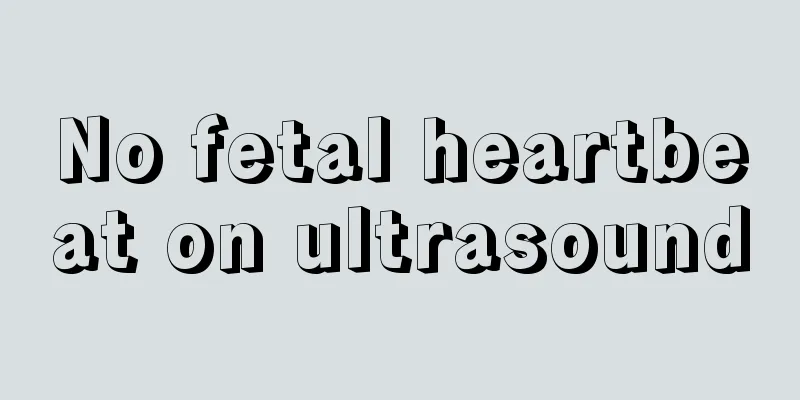Why does mitral stenosis prefer "her"? What are the symptoms?

|
Author: Zhang Haibo, Chief Physician, Beijing Anzhen Hospital, Capital Medical University Reviewer: Wang Fang, Chief Physician, Beijing Hospital In your busy life, have you ever experienced this: being out of breath when climbing stairs, feeling chest tightness and discomfort after a little activity? These seemingly ordinary symptoms may hide a heart disease that cannot be ignored - mitral stenosis. Although the incidence of mitral stenosis, a type of heart disease, has decreased, it is still a major hidden danger that threatens our health. 1. What is mitral stenosis? Mitral stenosis is a heart disease that specifically refers to a lesion in the mitral valve structure between the left atrium and the left ventricle, which results in its restricted opening and obstruction of blood flow. Figure 1 Original copyright image, no permission to reprint Under normal circumstances, the mitral valve ensures that blood flows from the left atrium to the left ventricle in one direction and closes during ventricular contraction to prevent blood from flowing back. When this valve is narrowed, it is similar to a clogged pipe, and blood flowing back from the lungs to the left atrium and then to the left ventricle will be blocked, causing increased pressure in the left atrium. This further leads to obstruction of pulmonary blood return, resulting in symptoms such as heart enlargement and pulmonary congestion, which manifests as chest tightness, shortness of breath, and wheezing after early activities, and even feeling out of breath after minor activities such as walking up the stairs. Long-term development may lead to pulmonary hypertension, dyspnea, fatigue, and lower limb edema caused by right heart failure. 2. What is the cause of mitral stenosis? One of the main causes of mitral stenosis is rheumatic disease, which accounts for more than 80%-90% of cases, especially in young people, and the incidence rate in women is slightly higher than that in men. This is because the early stage of rheumatic mitral valve disease is related to rheumatic fever caused by repeated streptococcal infection. Women with stronger immune responses are more likely to have immune deposits deposited on the mitral valve than men, causing valve stenosis, which in turn blocks blood flow from the left atrium to the left ventricle. Therefore, patients with rheumatic mitral stenosis are more common in women in their thirties or forties. In addition to rheumatic diseases, other factors such as infection and congenital developmental abnormalities may also cause mitral stenosis, but these situations are relatively rare. Rheumatic mitral stenosis has regional differences around the world. In European and American countries, cases of mitral stenosis are relatively rare. However, in Asian countries such as China, Vietnam, Thailand, Malaysia, India, as well as South America and Africa, rheumatic mitral stenosis is still relatively common. However, due to the improvement of economic and sanitary conditions in my country, the incidence of rheumatic diseases has been significantly reduced. 3. What are the symptoms of mitral stenosis? Typical symptoms of mitral stenosis include heart enlargement and pulmonary congestion due to obstruction of blood flow from the atria to the ventricles. Early patients may experience chest tightness, shortness of breath, and wheezing after activities, and activities in daily life such as climbing stairs can trigger worsening of symptoms. As the disease progresses, pulmonary hypertension may occur, manifesting as difficulty breathing and fatigue; at the same time, right heart failure can cause lower limb edema, and heart enlargement may be accompanied by complications such as arrhythmia and atrial fibrillation. In addition, patients with mitral stenosis sometimes have a distinctive facial appearance, the so-called "mitral facies." This is because long-term severe mitral stenosis leads to increased left atrial pressure and congestion in the early stage of pulmonary circulation, which affects the facial microcirculation of some patients, especially around the cheekbones, causing an increase in and thickening of blood vessels, manifesting as a yellow complexion, red cheeks, or even purple cheeks. Figure 2 Original copyright image, no permission to reprint However, with the improvement of economic and sanitary conditions, the incidence of mitral stenosis has decreased, and this typical facial feature has become rare. |
Recommend
Here are some ways to take care of your body before pregnancy
Here are some ways to take care of your body befo...
What is the reason for increased discharge at 39 weeks of pregnancy?
Pregnant friends usually experience some abnormal...
What are the effects of motherwort for pregnant women?
Motherwort is a traditional Chinese medicine. I t...
Women can quickly change their breasts from A cup to D cup by eating red dates and peanuts
Women all want to have an S-shaped figure and are...
How to relieve stomach cramps in pregnant women
It is not easy to be pregnant with a baby. The pr...
How to eliminate eye wrinkles for women
Loving beauty is women’s nature, and maintaining ...
Is it normal to have no obvious fetal movement at 20 weeks?
For pregnant mothers who do not have obvious feta...
Why does the body temperature not rise after ovulation?
For normal women of childbearing age, their basal...
Will women get cervical erosion if they don't have sex?
Cervical erosion is a common problem that affects...
Diagnosis of multiple uterine cysts
Cyst is a very common disease nowadays. There are...
35 weeks stomach tightness and hardness
As the pregnancy progresses, the fetus grows and ...
What should I do if I had sex before the angiography?
Generally speaking, many things need to be paid a...
Can I still get pregnant after having an IUD inserted?
Some couples do not plan to have more children af...
What medicine should I take if my sex hormones are abnormal?
In women, there are more estrogen, while in men, ...
Can I drink Laozao during the confinement period?
Laozao is a kind of rice wine made from glutinous...









